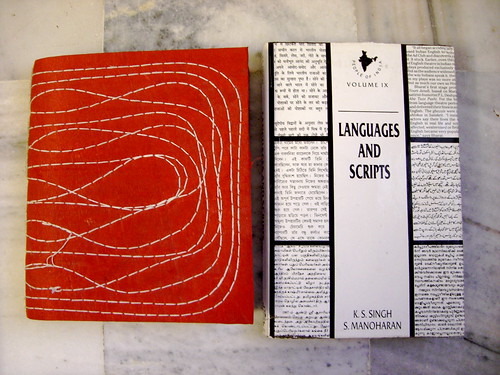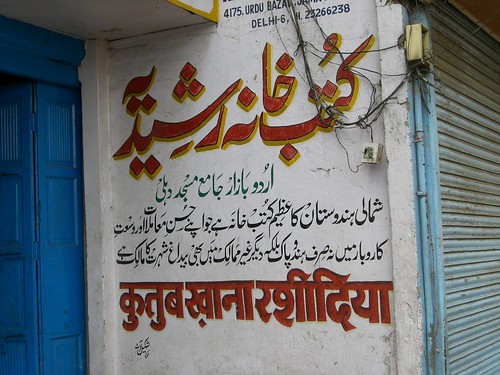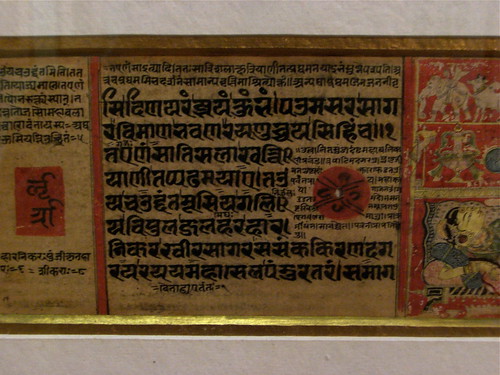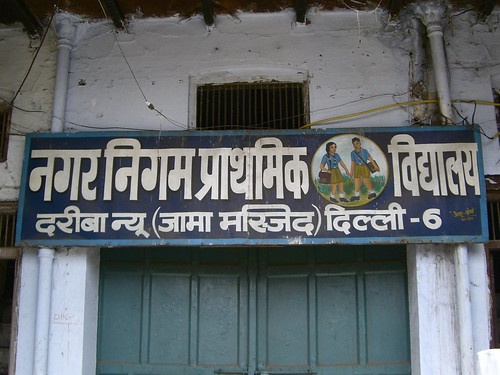Friday, May 16
This morning I went to the National Museum of India. This was a pleasant visit; the museum has a lot of sculpture from throughout India’s historical eras. Back in my second semester art history survey, we quickly tried to cover the bases of of Indian art; various other art museums I’ve visited have had South Asian departments as well. It was nice to see so many of the sorts of things I’d viewed in the past in such quantity. The manuscript section of the museum was closed, but the Indian miniatures exhibition space had some paintings with Devanagari writing in them, instead of Urdu. An audio tour was included in the price of admission, and this was fun to listen to.
In the afternoon I visited Manohar books, which is in a part of town not too far off from my hotel. Back in January, I bought a booked from ZVAB, and the order was fulfilled by Manohar, so it was a pleasure to look them up. Their shop is located in an area predominated by booksellers—the Oxford University Press, for instance, is right across the street. Even their building had several sellers in it, so I first went into a store that sold mainly new historical non-fiction and pulp fiction titles, and after a thorough look around for something juicy, left in disappointed. Only then did I realize that the storefront I was looking for was much more secluded…

Right: The book I purchased at Manohar books on Friday. Left: One of several sketchbooks picked up in the old city.
Once I was inside, I asked them if they had any books about Devanagri manuscripts or printing. They weren’t aware of any books about Devanagari manuscripts, but they did show me a small scholarly book about Urdu ones. They searched a little more for me, and then recommended Fiona Ross’s book on Bengali printing. After a little more discussion, they showed me The Linguistic Survey of India in all of its volumes, which I looked through while drinking a small cup of tea. While this isn’t exactly my subject area, or even something I could manage with my pocketbook or baggage allotment, it was quite interesting. Before I left, I purchased a Hindi–English dictionary and a copy of K.S. Singh and S. Manoharan’s Languages and Scripts, Delhi: Oxford University Press (1993).
Saturday, May 17
Early in the morning I walked up the hill for about a mile into Delhi’s old city. I wandered through the streets and picked up a number of newspapers, as well as several sketchbooks, like the red-covered one in the photo above. I guess that there is nothing special about notebooks with these sorts of covers… they must be common in India. I first saw one that Satya had a few months ago in London, and I was so excited that I wanted to pick up a few for myself. I also have one for Michi and for my bookbinding father.

Street signs in the old city are mostly multi-lingual. This one is written in Urdu (with the Arabic script) and Hindi (in Devanagari). There is a little English at the top right, too

From top to bottom: two lines of Hindi (Devanagari), then English (Latin), Punjab (Gurmukhi)i, and Urdu (Arabic).
That’s it for Delhi! Next up: Jaipur and Pune. If you want more images, all of my trip photos are stored on my flickrspace.


